Hawaiian shirts have been around for close to a century now, but they can still be a fierce topic of debate among enthusiasts as to whether they are stylish or not. In this installment of our “Should Men Wear” series, we talk about Hawaiian shirts and whether or not we believe they have a place in classic menswear.
What is a Hawaiian Shirt?
The history of the Hawaiian shirt is both rich and, to some degree, controversial; perhaps that’s why it’s been a signature piece for many of Hollywood’s on-screen rebels.
A note about terminology here: on the Hawaiian islands and elsewhere, you’ll sometimes hear these shirts referred to as “aloha shirts.” Meanwhile, some will use the term “aloha shirt” to refer more strictly to the authentic style of Hawaiian shirt that first gained popularity in the 1930s and 40s. To a large extent, though, these terms are used more or less interchangeably today. For the remainder of today’s guide, though, we’ll be using the term “Hawaiian shirt” because it’s the most widely recognized term internationally.
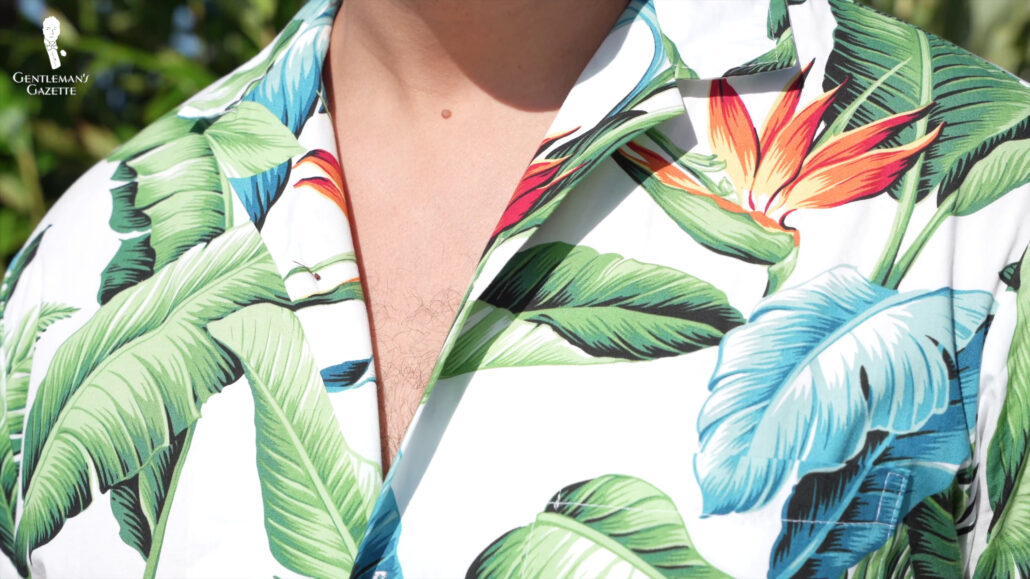
As to what the shirt is, it has a collar, usually in a camp collar style, and buttons all the way up, though some variations can incorporate a pop-over style. Because of their casual, warm weather origins, these shirts are almost always short-sleeved, and they will sometimes but not always incorporate a breast pocket as well.
Traditionally, these shirts are made from printed fabrics that incorporate patterns, motifs, and color schemes of Hawaiian or broader Pacific Islander heritage. Common historical choices included floral patterns, geometrics, quilt patterns, or tapa designs. In contemporary settings, themes have also expanded to include things like beach culture, surfing, tropical resorts, and things of this nature, and you’re often going to see intentionally loud color schemes to match.
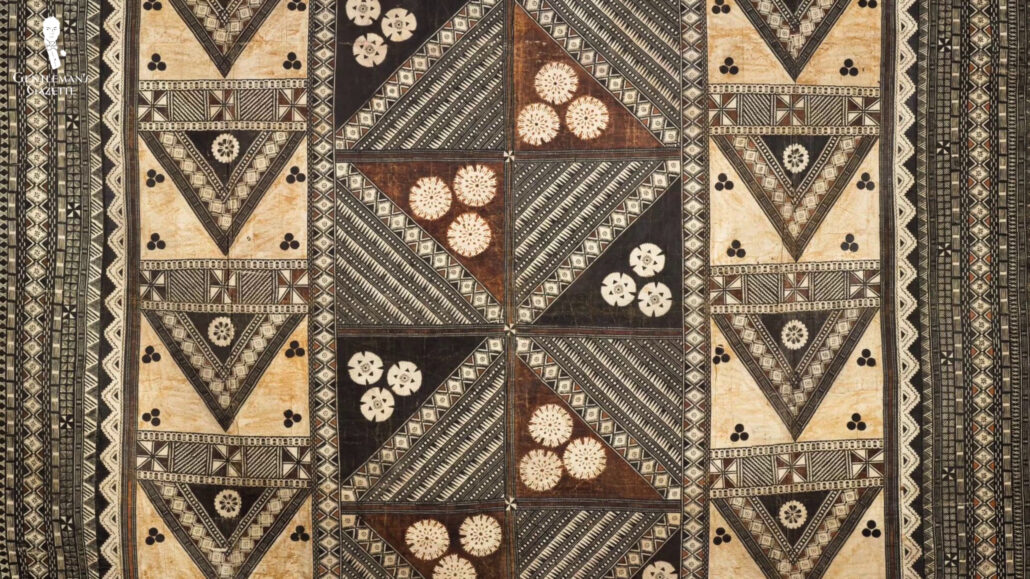
Keep in mind that Hawaiian shirts are distinct from other types of bold printed shirts like Japanese silk shirts, Italian silk shirts, or the psychedelic and boho print shirts of the 1960s and 70s. In general, though, most people find it true that, when it comes to Hawaiian shirts, you’ll know one when you see one.
History of Hawaiian Shirts
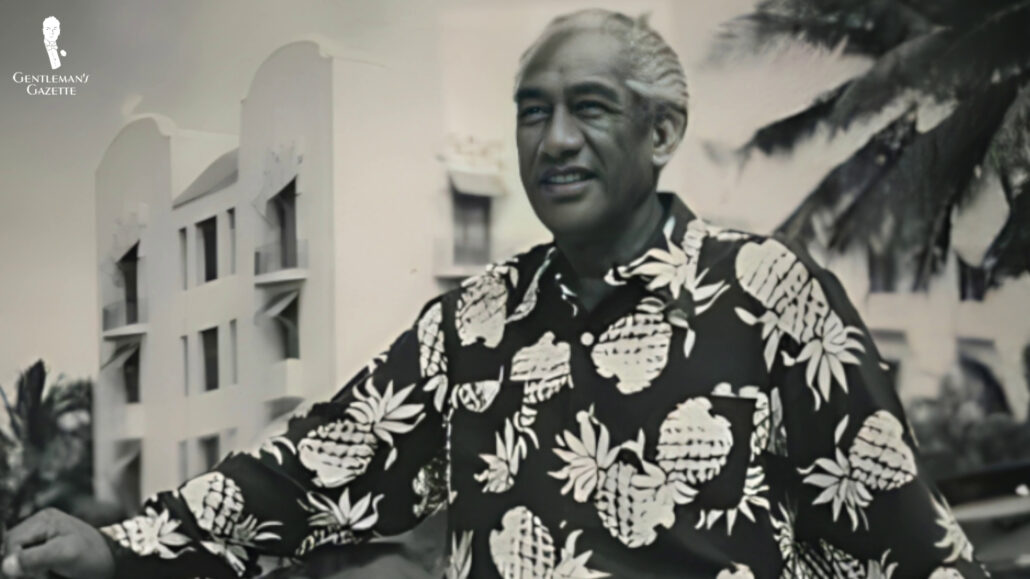
With our basic terminology out of the way, we can dive more fully into the history of Hawaiian shirts. Unlike other menswear items with misleading names, like the not actually from Panama–Panama Hat, Hawaiian shirts did originate in Hawaii.
Beginning in the early 1900s, Hawaii became a popular, exotic vacation destination for many Americans. Hawaii was a strategic base of military operations during the era of US Imperialism. This led to the US forcibly taking control of the island kingdom for fear that a European nation might do it before they did. But, force aside, once Hawaii was under US control, this led many Americans to view it as a safe and exciting travel destination.
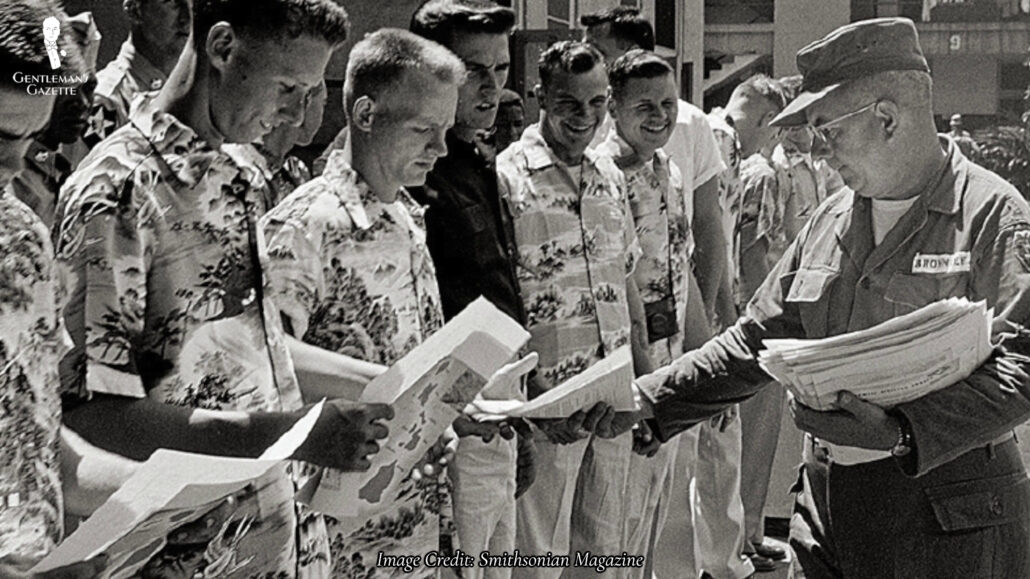
By the mid-1910s, records of Hawaiian music were selling very well, and instruments like the ukulele were popular everywhere, from college dormitories to high-end nightclubs across the US.
When it comes to Hawaiian shirts specifically, though, their actual origins are unclear and somewhat contentious. Some claim that the style began with a tailor using fabrics for women’s kimonos for men’s shirts instead, and others claim that they have their origin in Philippine tails-out shirt styles; and names, including Koichiro Miyamoto, known as Musashia the Shirtmaker, and Ellery Chun of King-Smith Clothiers, are often cited as originators, but no single account is considered truly definitive today.
Whatever the case, this style of shirt – along with the checked style known as the “palaka” that originated on Hawaiian plantations – became popular as a trend. This was to the extent that it was adopted as a comfortable alternative to standard, stuffy businesswear by Honolulu’s Chamber of Commerce. This, by the way, is what many consider to be the birth of the movement that led to one of the most popular office dress codes now out there: business casual.
Business Casual Men’s Attire & Dress Code Explained
Wealthy tourists also caught wind of the style and bought these shirts for themselves before returning stateside. So, as the 1930s wore on, these shirts became a status symbol showing that the wearer was wealthy enough to be able to afford a vacation to Hawaii.
The popularity of these shirts hit its peak once Hawaii officially became a US state in 1959. Statehood only furthered America’s fascination with Hawaii and wanting to adopt or emulate elements of its local culture. This included Aloha Friday, where businesses would consider it acceptable to wear a Hawaiian shirt to the office on Fridays as a way to transition somewhat into the weekend. And these Aloha Fridays are where we first saw Casual Friday, and then the broader business casual dress code start to grow.
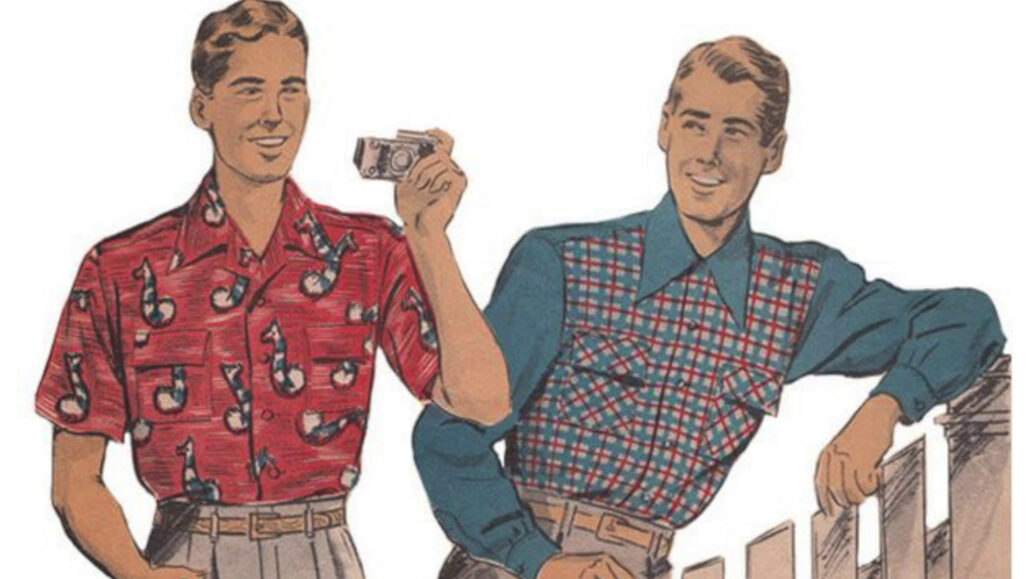
Popular musicians of the time – like Elvis Presley and, of course, The Beach Boys – used the beach lifestyle to help market their music; and this, coupled with the broader casualization that menswear of the time was experiencing, helped the Hawaiian shirt to become a staple in many men’s wardrobes.
The rebellious spirit and tropical association that Hawaiian shirts hold also meant that they became popular choices among Hollywood’s costuming departments in the 1980s and 90s. You can look to Brian De Palma’s “Scarface” or Baz Luhrmann’s “Romeo + Juliet” as just two notable examples.
You’ll still see Hawaiian shirts worn frequently in some parts of the United States, even today. They’ve developed an association with college fraternities and party culture, as well as being worn at resorts and as comfortable loungewear and even dadcore style.
Why You Should Wear a Hawaiian Shirt
So, now that we’ve established their history let’s go over the reasons why we think you should wear a Hawaiian shirt.
1. It’s a classic option for the right personality.
Given their iconic status and historical pedigree, we do believe that they are a classic option for the right personality, though they may be an acquired taste for some.
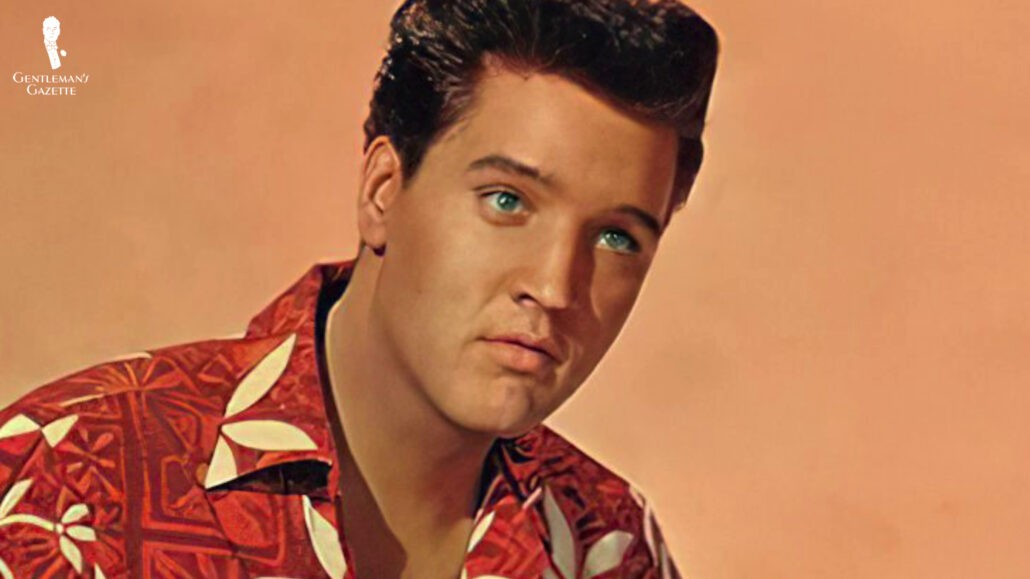
These shirts have served as staples for many style icons and other notable figures throughout the decades, with associated names including Harry Truman, Elvis Presley, and Tom Selleck. These three men were all style icons in their own right, and their wearing of Hawaiian shirts helped to propel them even further as a style statement.
2. It has an opportunity to introduce unique colors and patterns.
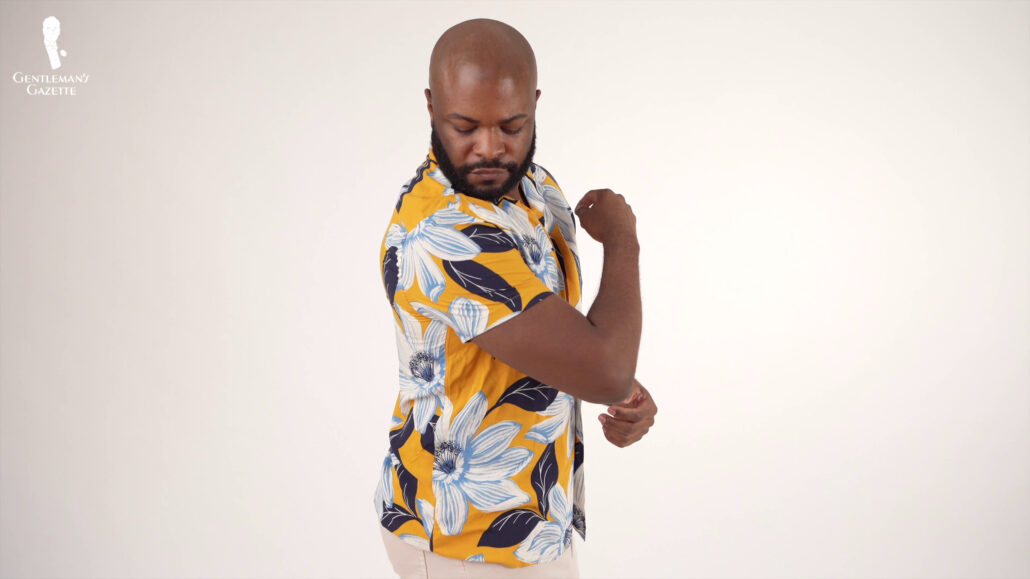
Next, a Hawaiian shirt will allow you to be extremely expressive with your color choices and patterns and introduce styles you might not otherwise employ. And while they aren’t quite as versatile as polos or other types of sports shirts, they can still inject your wardrobe with a greater number of overall options.
3. It’s less “stuffy” than other menswear items.
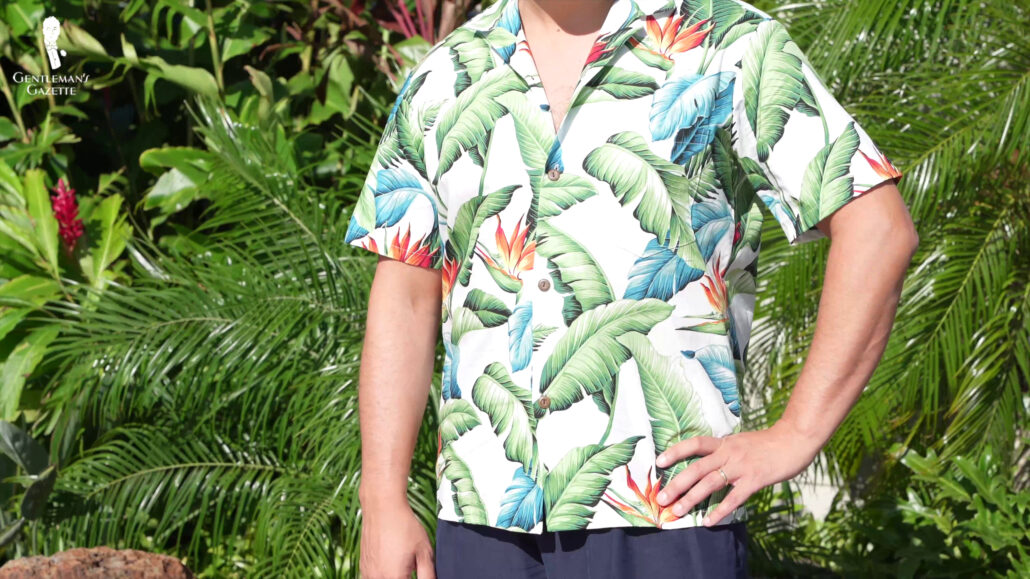
Compared to many other classic menswear options, which some might see as stuffy, Hawaiian shirts are much more friendly and fun. So, if you prefer to dress more casually by wearing a Hawaiian shirt, you can still come off as classically put together without looking stuffy.
4. It’s well-suited to tropical climates.
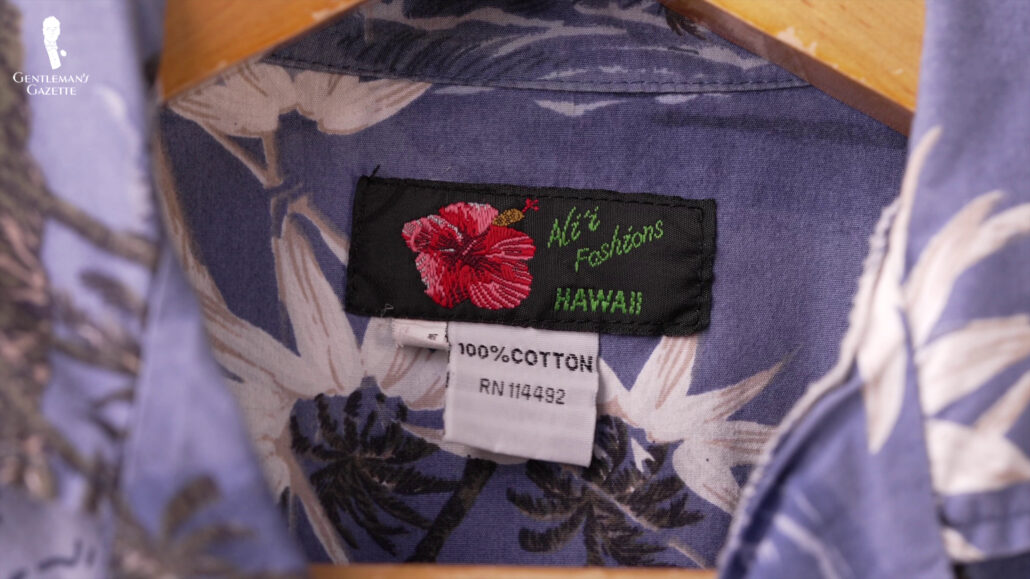
Next, and somewhat obviously, these shirts are a great choice for those who live in tropical or otherwise hot climates. Given that they’re often made from lightweight and breathable materials, they’re a very practical choice to consider.
5. It can be a signature style piece when done tastefully.
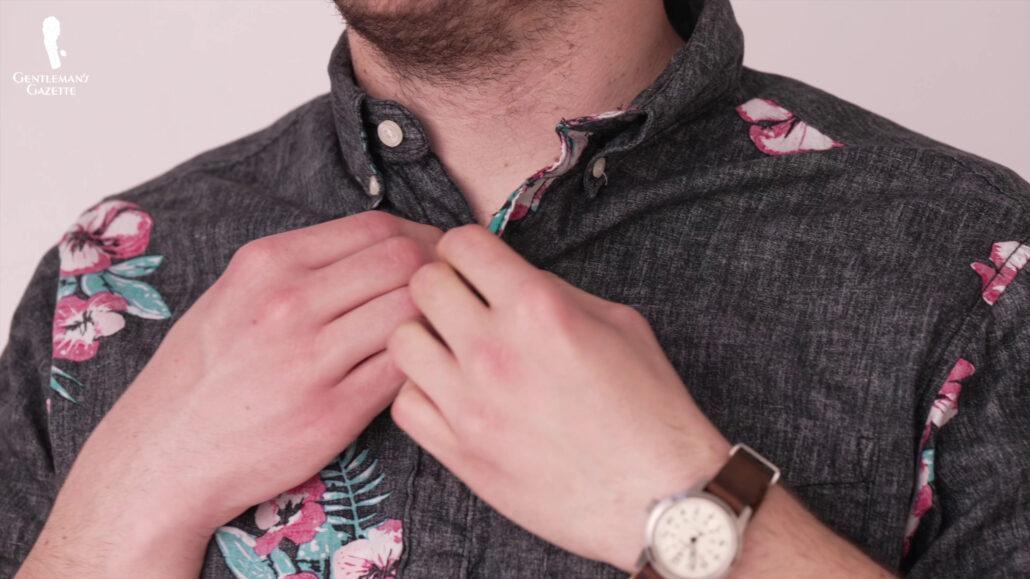
When done tastefully, they could even become your own signature style piece. Provided they fit within your wardrobe, few things are as immediately recognizable as a Hawaiian shirt, and if nothing else, having at least one will keep you covered for Hawaiian-themed parties. Even Raphael had one in his closet when he was living in Germany.
Why You Should Not Wear a Hawaiian Shirt
With all that said, though, there are also a number of reasons why perhaps you shouldn’t wear a Hawaiian shirt.
1. It can be a loud, potentially “one-use” clothing item.
First up here, Hawaiian shirts are very situational. Much like the ugly Christmas sweater, there’s a high potential to get things wrong if you’re not careful. This is chiefly because, again, Hawaiian shirts tend to be loud and extremely memorable. If your style is firmly rooted in more formal clothing, the exuberant nature of Hawaiian shirts could clash with the understated nature of the rest of your wardrobe
This also makes the Hawaiian shirt a potential single-use garment, meaning that it will have a relatively high cost-per-wear and, therefore, possibly not a great choice for your wardrobe.
2. It’s less versatile than other menswear options.
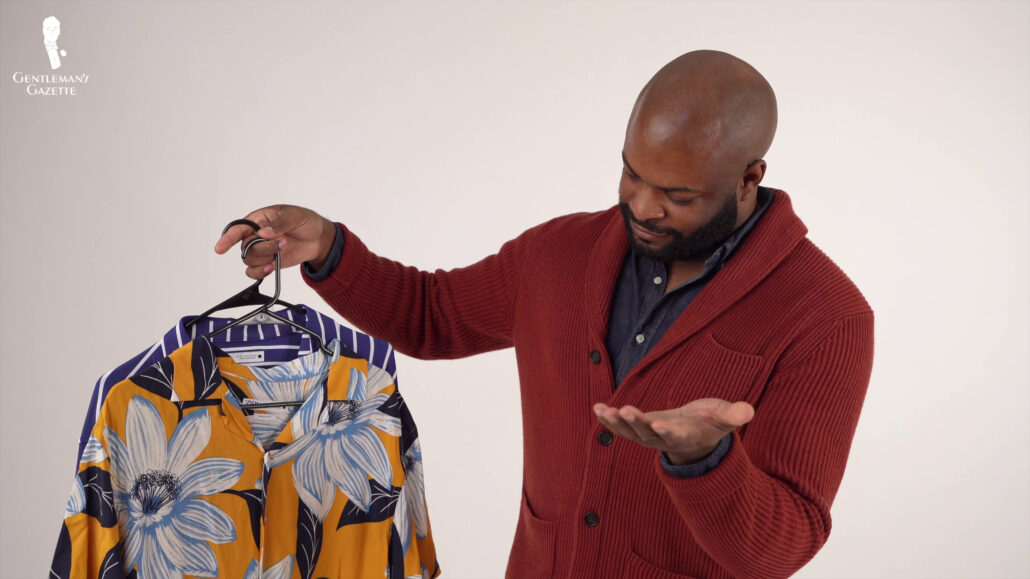
Next, other shirts can serve just as well as Hawaiian shirts in your wardrobe while also being far more versatile. As an example here, Sean Connery’s seersucker shirt in “Thunderball” serves much the same purpose as a Hawaiian shirt would, but still maintains more of an understated feel and could theoretically be paired with a wider range of other garments.
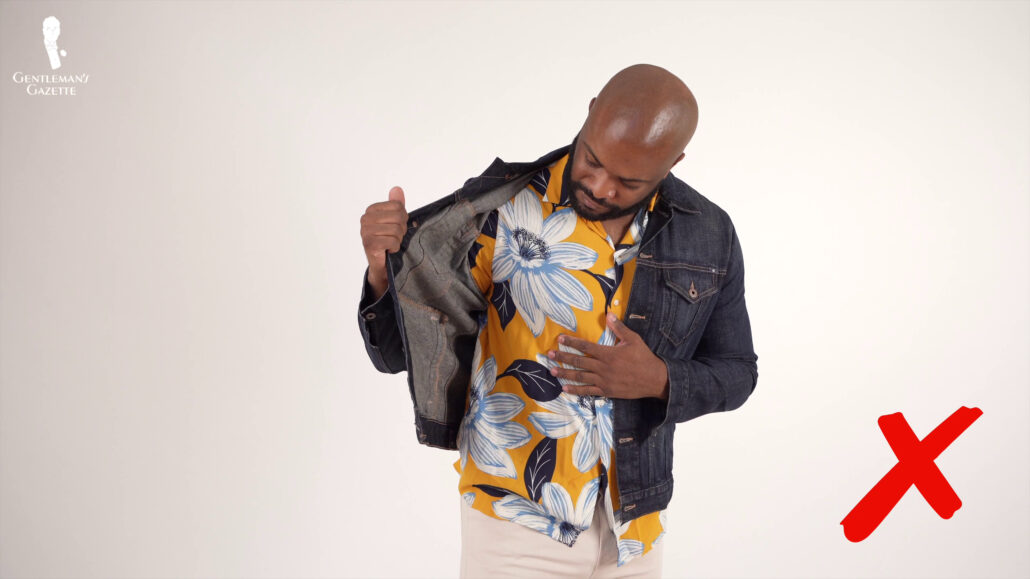
Casual sport shirts like these can even be layered under a jacket in a pinch, as Daniel Craig does in a resort wear setting in “Casino Royale.” Meanwhile, attempting to layer Hawaiian shirts under other pieces definitely falls outside the realm of classic menswear. Plus, chances are you won’t pull it off like Tyler Durden, unless you also look like Brad Pitt.
3. It can convey a negative perception.
Wearing a Hawaiian shirt outside of a resort setting can also carry some potential stigma. They aren’t appropriate in more formal settings, and they could potentially have people labeling you as a beach bum, slacker, parrot head, and so on.
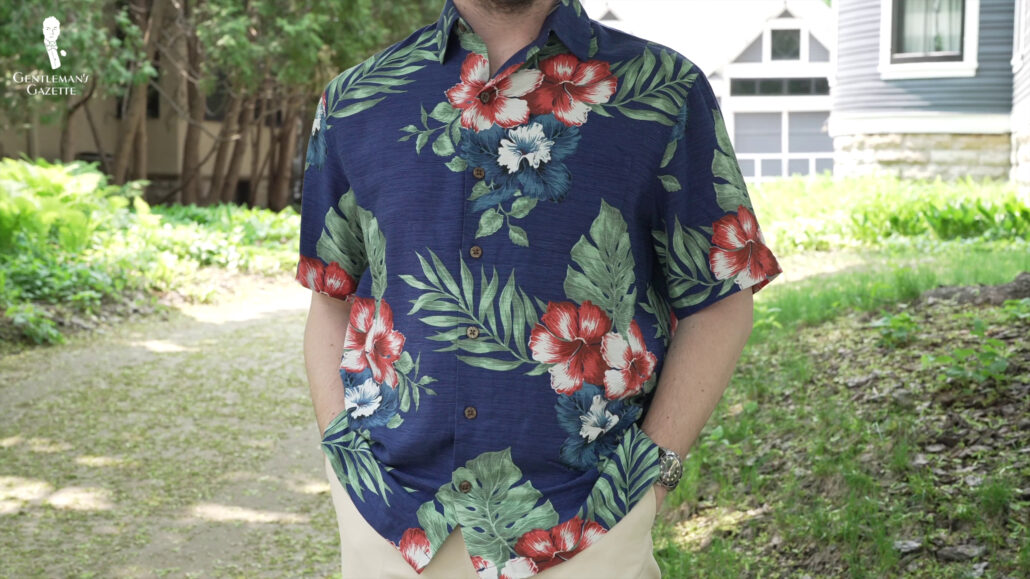
In simplest terms, then, Hawaiian shirts aren’t something you can wear just anywhere, and of course, even if you think you’re wearing the shirt well, some might just consider it ugly no matter what. This, of course, is a very subjective stance, but it’s true that the Hawaiian shirts bold nature isn’t going to appeal to everyone. And while we firmly believe that you shouldn’t let the opinions of others discourage you from wearing what you want, this is something worth keeping in mind.
4. Quality shirts can be hard to come by.
Quality Hawaiian shirts are harder to find these days in a sea of kitschy and tacky designs. In other words, that Santa-themed Hawaiian shirt might not make you look as cool as you think you do.
5. It carries political baggage.
Finally here, Hawaiian shirts have unfortunately come to carry some political baggage in recent years as well. Firstly, some might consider any non-Hawaiian wearing one of these shirts to be an example of cultural appropriation.
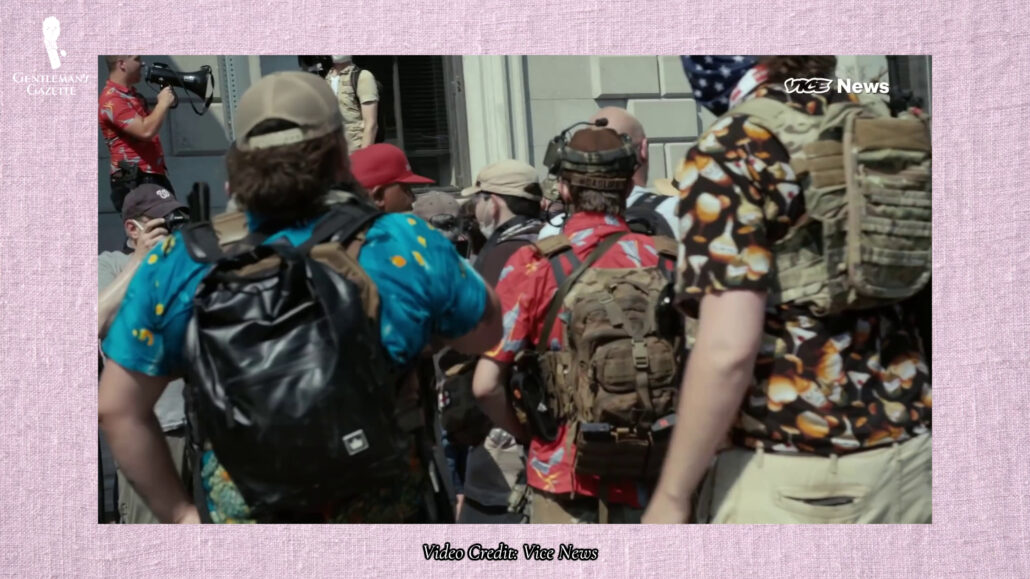
We believe that you can wear one if you’ve sought out something authentic and non-tacky and are wearing it with respect and classic style conventions in mind. However, we do understand that not everyone will agree with us, and that’s okay.
Also, extremist and alt-right groups have unfortunately appropriated the Hawaiian shirt as part of their uniforms in recent years. But, divorced from the other elements of these uniforms, you can confidently wear a Hawaiian shirt while following the conventions of classic style.
How to Integrate a Hawaiian Shirt into a Classically Styled Wardrobe
When considering the pros and cons of wearing a Hawaiian shirt then, you might now be wondering how you can even pull one off. The good news is that you definitely can as long as you keep the following six principles in mind.
1. Observe the Occasion
We’ll start here with tip number one: observe the occasion. Hawaiian shirts should be reserved for the proper times and places because, despite the fact that they are a collared shirt, they still are very casual by nature.
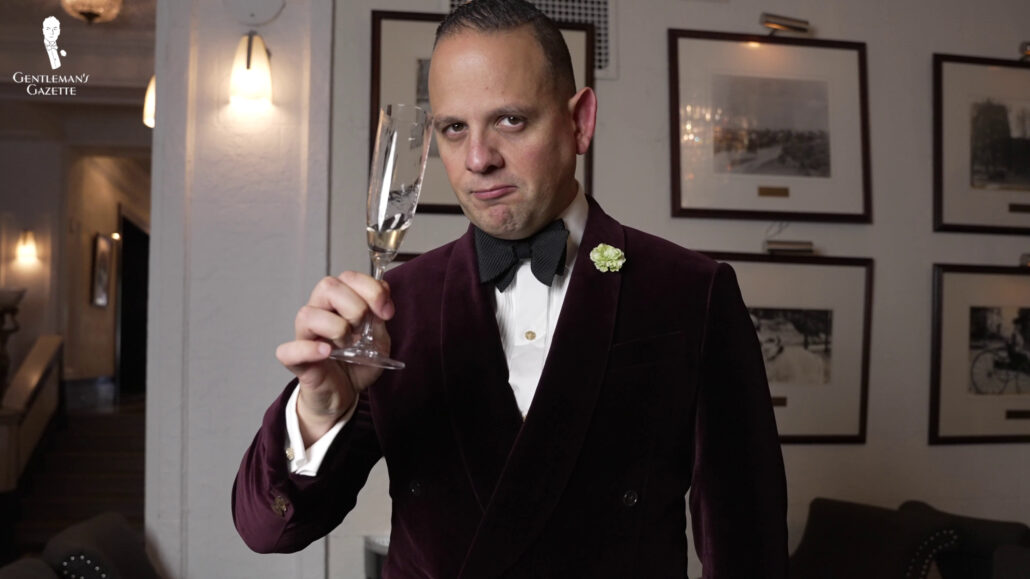
So, wearing one to casual parties, dinners, barbecues, or get-togethers, as well as doing some weekend shopping or certainly while on the beach or on the water, is perfectly sensible. However, they’re not a one-to-one replacement for dress shirts or other occasions that require more somber or sedate attire.
So, if you feel self-conscious while wearing one in daily life, we might suggest that you first reserve them for warm-weather vacations only, and then maybe try branching out from there.
2. Focus on Fit
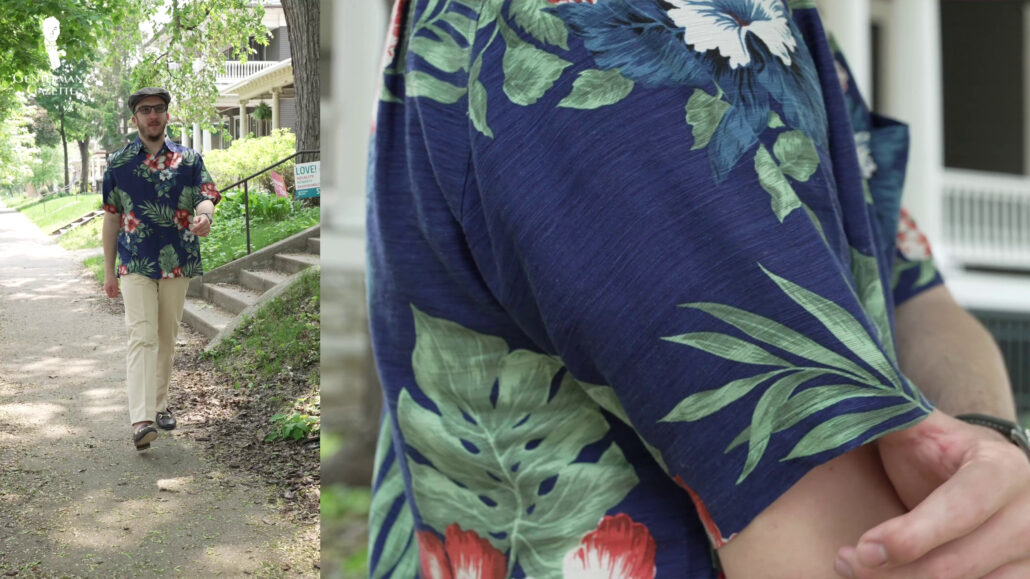
While it is okay to opt for a looser fit with Hawaiian shirts than with some other garments, you don’t want them to be completely formless and baggy. Look for the shirt to drape along your natural shoulder line with at least some amount of tapering or shape with a straight drop to the hips.
3. Mind the Materials
Quality Hawaiian shirts will be lightweight and made from cotton, linen, silk, or blends of these fibers. Not only will this reinforce the more casual nature of the shirt, but it will also ensure that you stay cool while wearing it.
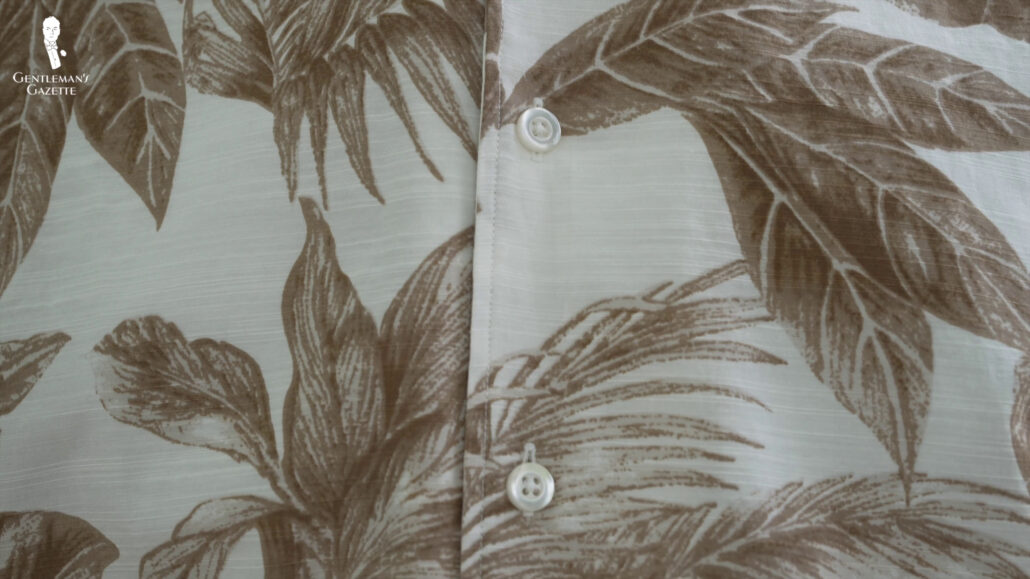
Yes, some Hawaiian shirts were historically made from rayon, even as far back as the 1930s, but in general, we’d suggest that you stick with natural materials.
4. Evaluate Your Ensemble
Keeping the rest of your outfits sedate compared to your Hawaiian shirt is key for a cohesive look. If your trousers, shoes, and accessories are in neutral tones, you can avoid overwhelming your outfit. Think of things like linen trousers in a white or stone color or loafers in an earth tone.
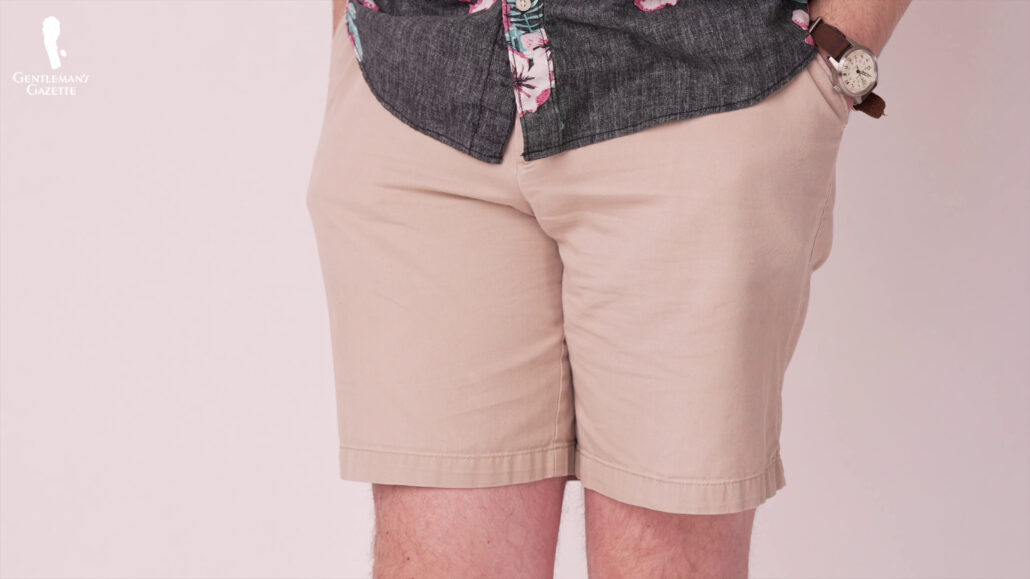
Also, remember to keep it classy and not expose too much of your undershirt or your bare chest under your Hawaiian shirt, even if this is Ace Ventura’s signature look. While it’s certainly all right to do this pool or beachside, as is much the case with flip-flops, doing it in other public settings is probably going to be frowned upon.
And for more information on undershirts and how to wear them properly, you can consult our other guide.
Undershirts For Men: Why & When To Wear One (or Not!)
5. Balance Relaxation and Refinement
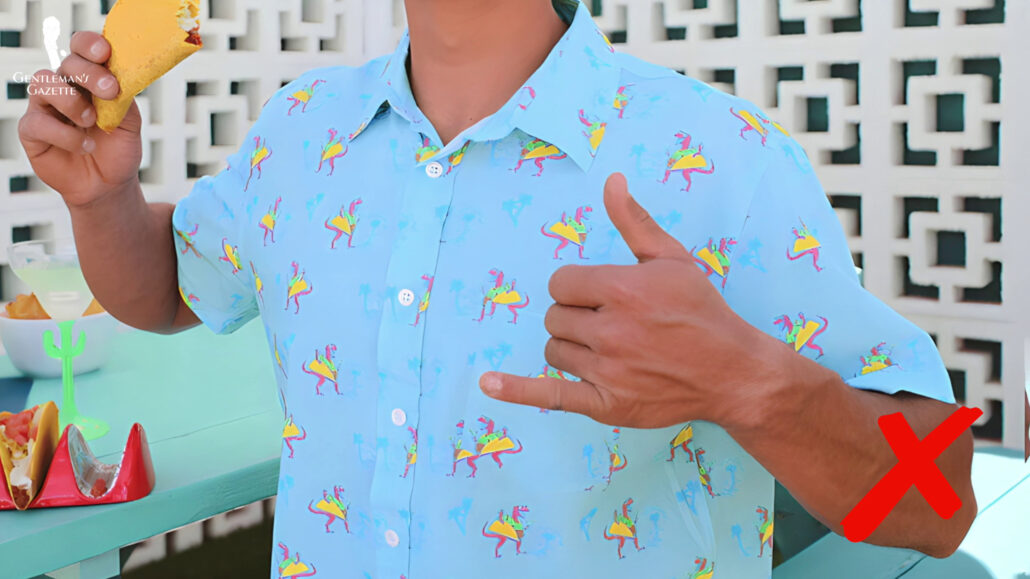
Hawaiian shirts are meant to be fun, and that should be embraced and celebrated; however, going for a tacky or garish print will make your Hawaiian shirt more trendy and less timeless and might also conjure up more of those negative associations we previously discussed more easily. So, sticking to the more original styles like the floral, geometric, and other classic prints we mentioned will leave you in better shape.
6. Remember Respect
In simplest terms, avoid any patterns or motifs that are offensive, childish, or that evoke negative stereotypes. If you’re unsure if a shirt’s design might come across poorly, just play it safe and stick to those floral or geometric patterns.
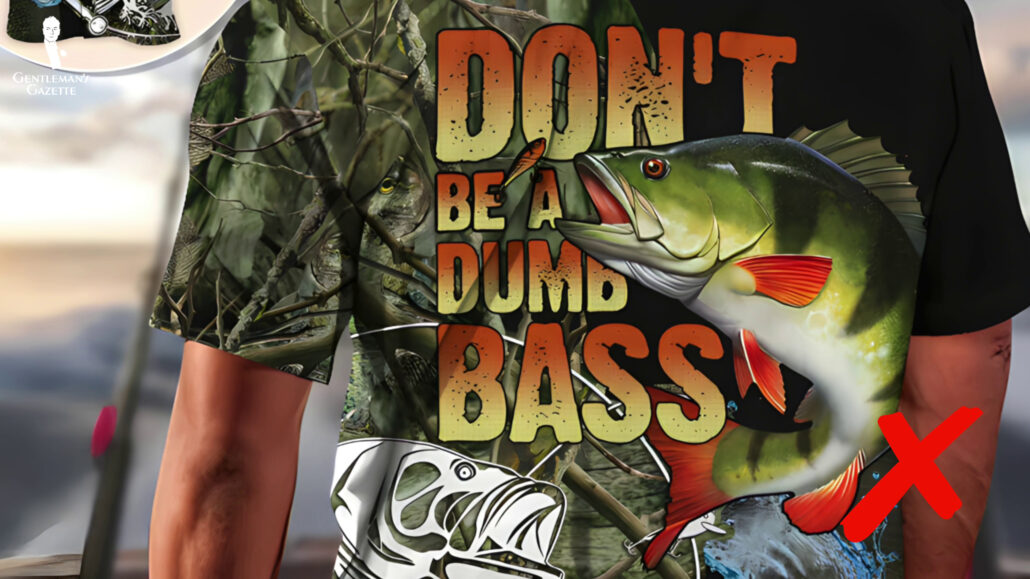
On that note, some good places to look for traditionally-styled Hawaiian shirts would first be to go to the source and find independent sellers in Hawaii. Alternatively, you could look to retailers like Pagong, a Japanese brand that specializes in patterns that hearken back to the shirt’s origins.
Conclusion
In conclusion, then, Hawaiian shirts occupy a truly unique place within the world of classic menswear. While they won’t be for everyone, we believe that any gentleman can wear one well when armed with the proper knowledge, and of course, there are certainly alternatives available, like polos and sport shirts that can be worn instead of Hawaiian shirts don’t appeal to you. But, if they do, they can certainly be a fun inclusion to your wardrobe.
Do you have any Hawaiian shirts in your collection or are you now looking to get some? Let us know in the comments below. And now, before we say “Aloha ‘oe” today, let’s do an outfit rundown.
Outfit Rundown
Today, I am, of course wearing a Hawaiian shirt. This one was made by Ali’i Fashions in Hawaii, and it’s constructed from 100% cotton. It features a traditional camp collar and a full-button front. The shirt is predominantly in shades of blue and features accents in green, white, and brown, and features a stylized, map-like representation of the Hawaiian Islands.
While I don’t wear this one often, it’s been in my collection for years as it was originally a gift from my grandparents following one of their Hawaiian vacations, which has inspired me to maybe try wearing it a little bit more.
In turn, the remainder of my outfit is relatively simple and sedate, and we can start here with my plain, stone-colored trousers. My suede loafers are tan in color and in a heavily unstructured moccasin-like design from Velasca.
To go along with the casual feel, I’ve also left product out of my hair and let my beard grow even a bit more than normal. As for a potential fragrance choice, I could evoke a bit of that 80s “Magnum PI” Tom Selleck feel and go for something like Davidoff’s Cool Water.
And, of course, as a piece of outerwear, my trusty coconut straw pork pie hat with its colorful hat band would go perfectly well with my Hawaiian shirt.
And rounding out my outfit today are my two-toned, shadow-striped socks from Fort Belvedere. They’re a relatively new colorway in our shop at the time of this post’s production in khaki and navy.
You can find the socks that I’m wearing, as well as a wide array of other classic menswear accessories, by taking a look at the Fort Belvedere shop.
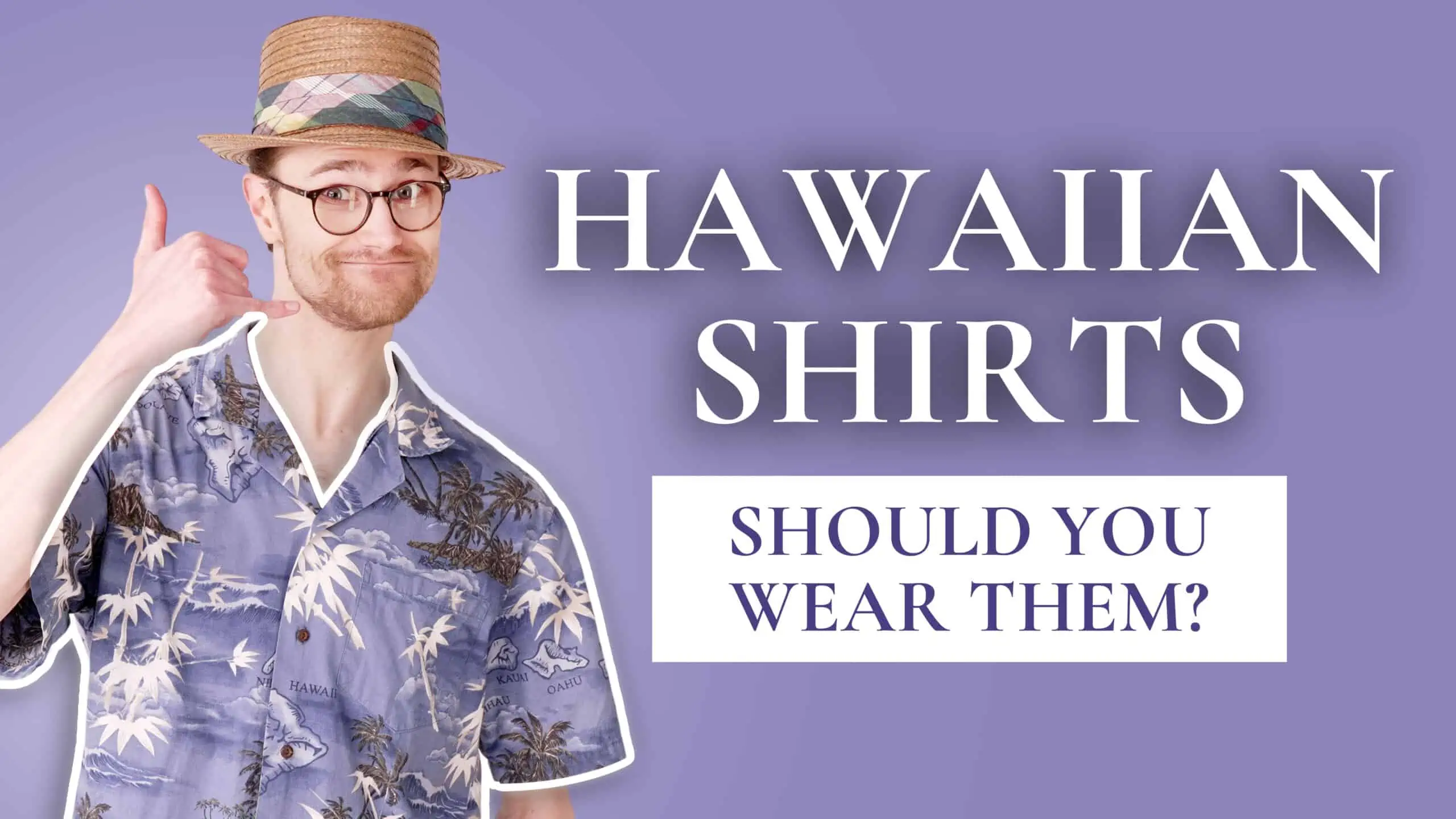
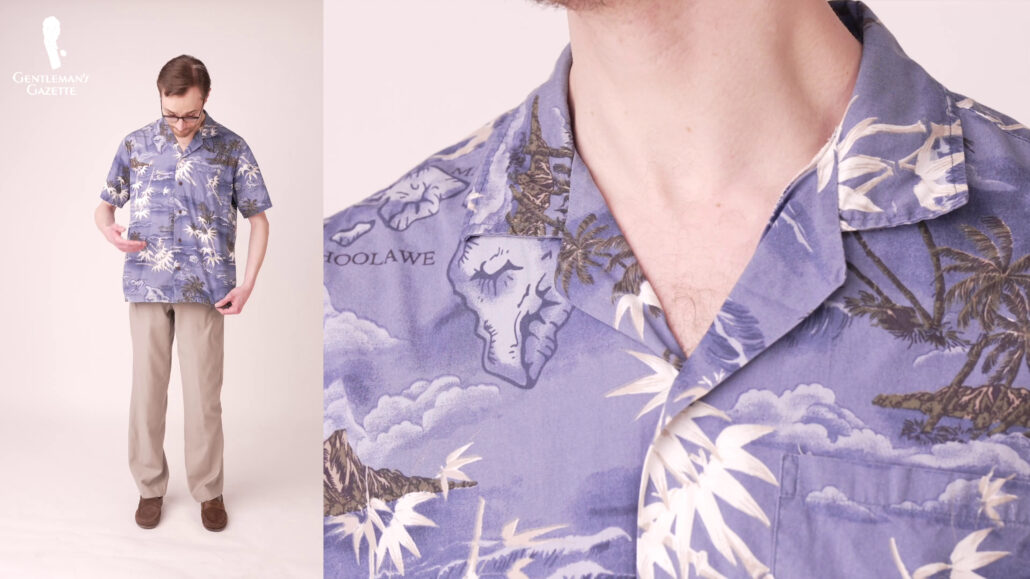
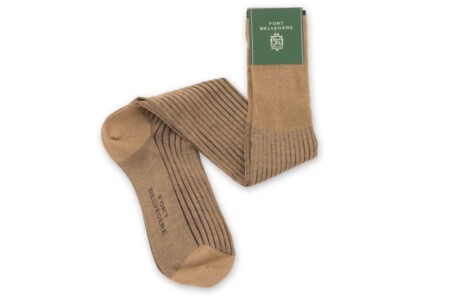
Never.
Also my first – and last thought to the above question.
It might be somehow classic but not for my European setting: far too loud, too casual. The worst is the combination with the lady in evening dress…
I have to admit that I have a personal experience with an ardent fan of Hawaiian shirts: a rude/disrespectful Amerian teaching English classes; nearly all year round he wore those shirts…
I used to have several Hawaiian shirts. Still have a few. I have moved towards more dressy shirts like Guayabera shirts made out of linen. I think one reason I moved was due to the perception that Hawaiian shirts were linked to the alt right.
I’ve worn Aloha shirts for years and have a wide assortment that I wear whenever the climate and occasion allows. Many I’ve had for 15 years or more. They never go out of style because they were never in style, at least here in the Midwest. I never heard of any link to the alt-right until I saw that in this article. Aloha shirts are not for everyone. I’m comfortable wearing mine, which makes all the difference.
I got one lately for my birthday, and being someone who doesn’t even own shorts, I am still a bit undecided about the matter. But knowing now that even President Truman owned one, maybe I will give it a try.
I am really baffled, though, to know extremist groups would use these as part of a uniform. What could possibly make them do that? Have prices in surplus stores risen so much?
Whatever, thank you very much for this very insightful article.
Hawaiian Shirts? Not for me. I’m much more a short sleeve guayabera guy. For more than 20 years (or so). I don’t even know how many of these I currently have.
I don’t have one any more, but back in my thrifting days (the 80s) I found an authentic vintage Hawaiian shirt with coconut husk buttons. It was subtle, by Hawaiian shirt standards, blue, black and white, but I considered it to be a one-off, occasional, party shirt at a time when I was doing the mostly all black/monochromatic art student look.
Now I want to find a new/old one with the coconut buttons.
Well, recently donated most of my large collection of Hawaiian shirts to a group of Swahili refuges. They love bright colors and all were very appreciative. I kept about 10 of my top favorites. Mint condition quality shirts from the ’90s.
I still prefer tailored short sleeve shirt in cotton or mix cotton with muted colours for the casual occasion, not loud or bold patterned. It is a safe alternative. The article was very thoughtful and informative.
Best regards
Darmendar
I notice you mentioned that Hawaiian shirts were worn on fridays in offices that led to casual fridays but they are also a staple of construction sites nation wide on fridays. Especially in most unions
Great video. Hawaiian shirts are near and dear to me. We lived on Oahu twice and our daily office attire was an Aloha shirt and khaki pants.
Mahalo and Aloha,
Brian
Like classic western wear I own a couple of these shirts, but also like western wear I believe there is a time and a place in which said items are appropriate. I lived in Hawaii for 2 years during my adolescence and suspect my love for Hawaiian clothing took firm root then. Even though I live in the extremely hot southern plains, I still own and wear Hawaiian shirts occassionally during the summer months. Mine are primarily silk and have floral designs. I find them comfortable enough to wear for casual gatherings or tropical retreats, but I wouldn’t want to wear one every day and certainly not to a formal event.
I have a huge collection of vintage Hawaiian shirts spanning from the 40s to the early 60s. In particular, I collect shirts by Alfred Shaheen. The shirt Elvis is wearing is by Shaheen. I have that same design but in blue instead of red. Shaheen had in-house designers and printed his own fabric. I live in Florida and a vintage straw fedora, a vintage Hawaiian shirt, and linen shorts constitute my summer uniform. Vintage Hawaiian shirts have beautiful designs. But not so much after the early 60s. Magnum PI’s Hawaiian shirts were hideous, and unfortunately that’s what a lot of people think of when it comes to Hawaiian shirts.
That’s assuming they know who Magnum PI is. I doubt anyone under the age of 40 would.
The grey haired guy in the photo at the top of the article is Duke Kahanamoku, a swimmer and Olympic gold medalist. He was a famed surfer and helped to popularize the sport. He also had his own shirt label, and the shirt he is wearing is a Kahanamoku, the design of which is being reproduced to this day.
I prefer shirts in a coarse cotton weave that is difficult to find these days. Otherwise, just cotton. Rayon and silk are not comfortable to me, but the rayon dries quickly if you may be getting wet. A quality shirt will have a pattern match pocket and buttons of coconut shell or bamboo.
There is a social correlation with recycled silk sari motifs that were tailored into mens shirts from the 90’s and became a signature alternative to the Americanisation of the Antipodean spirit that took some refuge in the sub continent colour and design through philosophical transcendentalism that seemed from the 1960’s and even earlier if considering mystics from the east arrival in the Americas.